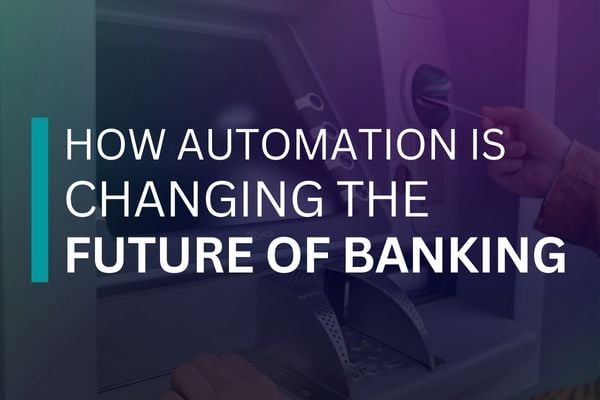What does automation mean for banking in the future? Discover the true impact of automation in retail banking, and how to prepare your financial institution now for a brighter future.
You may wonder how radically machines will transform work and society in the decades ahead. And rightly so. Advances in robotics, artificial intelligence, and quantum computing make machines so smart and efficient that they can replace humans in many roles now and in the next few years.
The wave of automation (meaning machines or tools like TCRs, self-service machines, software, etc., that, through computing and artificial intelligence, can accomplish tasks more accurately and efficiently than humans.)is a byproduct of multiple technologies that have accelerated in recent years to achieve superior performance and cost economics.
Banking is an industry that is and will continue to experience a profound impact from the advancements in information technology. With robotic process automation, artificial intelligence, and integrations becoming increasingly more cost-effective, automation is rapidly encroaching from the back end to the front end of consumer interactions.
The ATM Revolution
As we analyze what automation means for the future of banking, we must look to draw any lessons from the automated teller machine, or ATM. The ATM is a far cry from the supermachines of tomorrow; however, it can be very instructive in understanding how technology has previously affected branch banking operations and teller jobs.
Since their modest beginnings 50 years ago, ATMs have evolved from simple cash dispensing machines as consumer needs dictated. From “drive-up” ATMs in the 1980s to “talking” ATMs with voice instructions ’90s, now Video Teller ATMs have become more prevalent. On the back of further innovations and advancements such as integrations, mobile “cardless” access, and larger tablet interfaces, the next stage in the evolution of the ATMs may be “robo-banks” that can do what tellers do.
But how did the introduction and growth of ATMs affect the job of tellers? Despite an increase of roughly 300,000 ATMs implemented since 1990, the number of tellers employed by banks did not fall. According to the research by James Bessen of the Boston University School of Law, there are two reasons for this counterintuitive result.
First, ATMs enabled rapid expansion in the branch network through reduced operating costs. Each new branch location meant more tellers, but fewer tellers were required to adequately run a branch. Second, ATMs freed tellers from transactional tasks and allowed them to focus more on both relationship-building efforts and complex/nonroutine activities.
On another note, ATMs also introduced new jobs as armored couriers have been required to resupply units and technology staff to maintain ATM networks. However, dealing with the complexities of having multiple systems access customer information provided new challenges.
In 2014, there were about 520,000 tellers in the United States—with 25% working part-time. This number is expected to decrease by 40,000 by 2024 due to multiple drivers, including the proliferation of mobile banking, the rise of “cognitive agents,”, and other innovations like the “humanoid robot,” that all fall under the umbrella of automation.
The Impact of Automation
So what can we learn from automation and its impact on jobs in retail banking?
Well, automation reduces businesses’ operating costs to free up resources to invest elsewhere. (In the case of ATMs, it was in new branches and services.) Second, instead of replacing jobs entirely, automation displaced certain tasks and enabled branch staff to level up their skills and become integral in delivering other high-value-added services.
It’s vital to distinguish “tasks” from “jobs.” Jobs contain a group of tasks needing consistent fulfillment—some of which may be more routine (and can potentially be automated), while some require more abstract skills. There is a balance to be struck between the speed and accuracy of computers and the creativity and personalization of human interaction.
So, instead of asking whether automation will completely replace jobs not, you should be seeking to discover what tasks should be done by machines, and what complementary skills are better done by humans (at least for now). Then determine what the augmented banking experience is for the future of banking.
As computers improve, they may be able to perform these more abstract tasks as well. Ultimately, we will likely reach that reality someday, but it will likely be a while ahead yet. But with further product innovations and changes to the competitive market structure, human expertise may be required for new and more complex tasks.
Ultimately, the banking industry may need to get better at anticipating and proactively shaping how automation will stoke the flame of innovation and demand while shifting competitive dynamics beyond operational transformation.
By playing the long game and reimagining the new human-machine interface, banks can prepare for a world where people and machines won’t compete, but will complement each other and expand the net benefits. Navigating this journey will be neither easy nor straightforward, but it is the only path forward to an improved future in consumer experience and business operations.
And at CFM, we’re devoted to helping you achieve this better banking experience, together.
